A Whisper in the Grove
It started with silence. Then came the wind — soft, cautious — carrying
the scent of wild nectar and forgotten blossoms. You are Maru, the last
scout of the ancient honeykin. The Grove has fallen into sleep, its
flowers withered, its bees long scattered. But you have returned. And you
still remember.
In Honey Adventure: Quest of the Forgotten Grove, every wingbeat, every drop of nectar, every remembered flower matters.
You’ll explore living maps, tend to forgotten blossoms, awaken bee
spirits, and rekindle what once was called the Eternal Bloom. This is not
a race. It’s a ritual.
About the Game
Honey Adventure is a slow-paced, contemplative game blending exploration, collection, and light puzzle mechanics. It’s designed to soothe, immerse, and reward curiosity. You control a tiny bee in a vast, interconnected forest world. Your task: collect lost nectar, pollinate ancient flora, and decode the Grove’s memory via glowing pollen trails. Core mechanics include:
-
A real-time day/night and seasonal cycle affecting plant growth
-
Story-based side quests from old trees, mushrooms, and forgotten bee statues
-
Meditative audio design with no spoken dialogue — the world speaks through sounds
-
A gradual restoration system where you help nature regrow, biome by biome
Biomes
The Grove’s Forgotten Biomes
The world of Honey Adventure is not randomly generated — it is handcrafted, layered, and alive. You’ll traverse five major biomes, each with its own ecosystem, rhythm, and memory structure. Each biome has unique ways to collect nectar, unlock secrets, and commune with plant spirits. Nothing is rushed. Every area wants to be remembered.
-
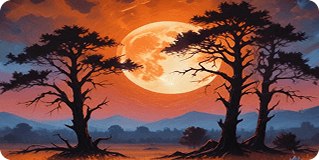
The Ember Orchards:
Orange haze, brittle bark, and flame-thistle plants that awaken only after sunset
-

The Cradle Ponds:
Wetlands where lily petals form puzzle paths that shift daily
-

The Starflower Rise:
A starlit mountaintop that only blooms once every seven in-game days
-
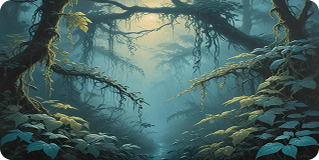
The Mistroot Canopy:
A tangle of fog and vine, where echo-flowers pulse with sound
-
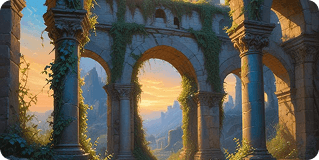
The Hollowhive Ruins:
Remnants of the last great bee-city — and something still buzzing within
Trails & Echoes
Pollen Trails & Memory Echoes
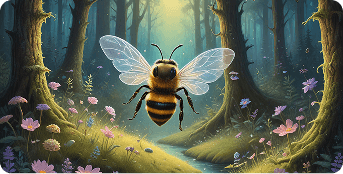
Unlike traditional quest systems, Honey Adventure uses memory echoes. As Maru collects pollen and explores, you’ll trigger glowing trails — fragmented pieces of what once was. Some trails fade if followed too quickly. Others appear only at dawn, or when specific plants bloom. Time is a puzzle here. And patience is power. Follow these trails to:
-
Unlock paths buried beneath vines
-
Awaken trees that hum in ancestral tones
-
Reconnect with ancient bee spirits who may guide… or question you
-
Decode flower constellations — puzzle-like arrangements requiring intuition over logic
Journal
The Honey Journal
Your in-game companion is not a UI. It’s a weathered, living book that grows with you. The Honey Journal captures sketches, blooming maps, seasonal findings, and pollen memories. Players often spend hours just flipping through its pages. It hums softly. Sometimes it sings.
What it can do:
-
Automatically records every flower you find, along with its active hours and traits
-
Chronicles relationships with forest inhabitants — yes, even the shy rock beetle
-
Unlocks hand-drawn visual tales told in petals, dust, and shadow
-
Allows you to bind collected honey into Memory Crystals — rare items that preserve Grove Lore
Reviews
The forest doesn’t speak in words — it hums in emotion. And so do those who’ve wandered through it.
-
“My favorite part is when you collect enough nectar and the flower thanks you. Not in speech — but it glows and the music changes. That made me feel important.”
Byteforager, age 12
-
“I didn’t expect to cry when I first saw the Hollowhive mural. But it mirrored something in me: a longing to rebuild, slowly, without noise. This game taught me that tending is sacred.”
Linnéa, Apiarist & Poet
-
“The Journal isn’t just a mechanic. It became my record of peace. After work, I open the game, hover, listen. That’s all. And for once, that’s enough.”
QuietLogic
-
“There’s a tree near the Mistroot that only opens at night if you arrive silently. I found it by accident. Inside was a melody I hadn’t heard since my childhood. How is that possible?”
SojournBell
-
“I didn’t expect to cry when I first saw the Hollowhive mural. But it mirrored something in me: a longing to rebuild, slowly, without noise. This game taught me that tending is sacred.”
Linnéa, Apiarist & Poet
-
“I left the game running overnight. At sunrise, the Grove was blooming differently. The bees were asleep. But the river was louder. No achievements. Just a living world, waiting for me to come back.”
El-Aurum
Rhythms
Temporal Mechanics & Rhythms of Play
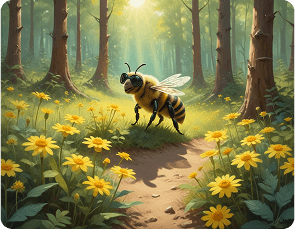
Time in Honey Adventure is a living, breathing participant. The game doesn’t run on real-world time — but on a forest rhythm clock, tied to wind patterns, player pace, and bloom density. These systems were made not to pressure you — but to respect your time. You are not punished for leaving. In fact, absence often reveals new paths.
-
Day/Night Cycle: Every in-game hour brings different flora behaviors. Some puzzles only resolve under moonlight or fog.
-
Seasonal Bloom Events: Once every real-world week, the Grove reshuffles — certain paths close, new ones open.
-
Weather-Linked Logic: Rain nourishes sleeping mushrooms. Wind reveals pollen trails. Sunlight opens sunpearl vines.
-
Deep Rest Mode: If you don’t play for 3 days, your Grove begins flowering without you. When you return, Maru journals what happened.
FAQ
The Kind of Questions Flowers Might Ask
-
Both. Children will delight in the beauty, the sounds, the joy of flying and collecting. Adults will find layers — emotional weight, environmental allegories, slow-time design. Some levels read like lullabies. Others… like elegies.
-
No. The Grove persists offline. However, some seasonal shifts and events only synchronize while connected. Offline players will see a different pattern — just as valid, just as rich.
-
There are no enemies. No death. Only puzzles that require observation, timing, and quiet intuition. You may miss a bloom — but it will return. You may fail a pollination — but the Grove forgives.
-
To restore the Eternal Bloom. But that’s just a shape. The true goal is to rekindle rhythm, memory, harmony. For some, it ends when the Grove is green again. For others, it never ends. They stay. They tend.
-
Yes. Built from field recordings, wind, bells, bee tones, and harmonic decay. Your actions tune it. Some music is hidden in petals. Others in silence. If you hear singing… you’ve been noticed.
The Grove
The Grove Remembers You
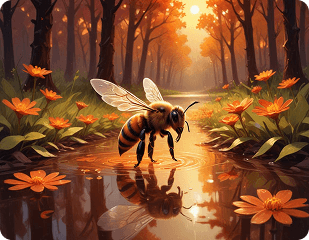
There is no leaderboard. No currency. No “You Win” screen. Instead, the Grove learns you. This is not gamification. This is recognition. Your rituals become part of the world’s memory. And one day, without warning, the Grove will speak back — not in words, but in a gesture so personal, you’ll wonder if the game was waiting for you all along.
-
If you play at the same hour every day, a flower blooms in that time’s shadow.
-
If you fly in circles often, birds begin to mimic you.
-
If you rest on the same leaf, it bends slightly when you return.
-
If you pollinate without taking nectar, the forest hums a low, warm note.
Philosophy
Philosophy of the Grove
Honey Adventure isn’t built for addiction, perfection, or speed.
It’s built for those who want to notice again.
To rediscover rhythm in small things.
The game was inspired by forgotten gardens, apiary notebooks from the
1800s, and the concept of symbiotic pacing — where the player doesn’t
dominate the world, but co-exists with it.
There is no right way to play. But there is your way. And the Grove will
shape itself around that.
So fly. Tend. Listen. Let sweetness be slow.